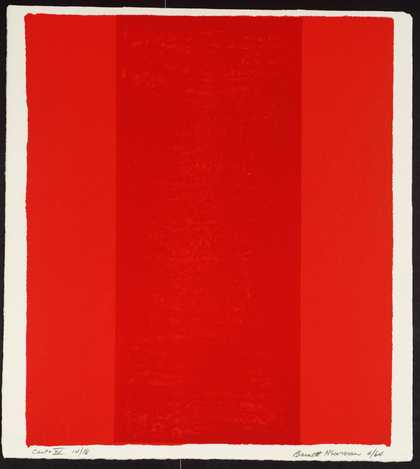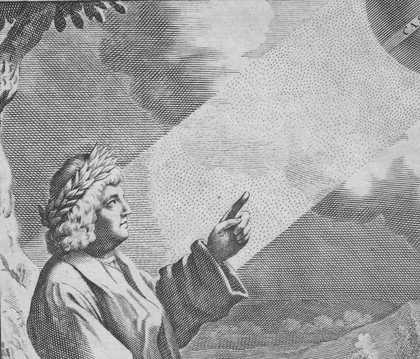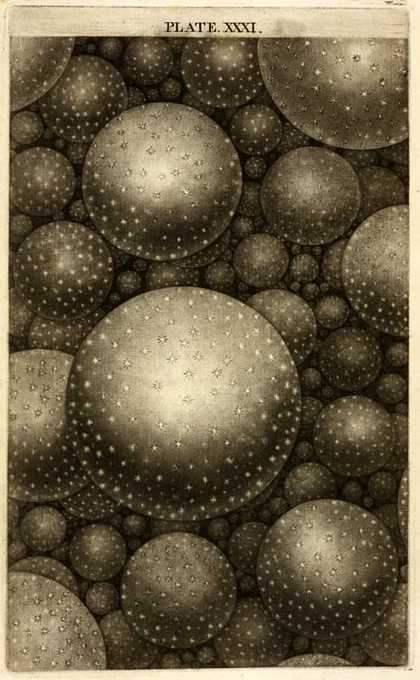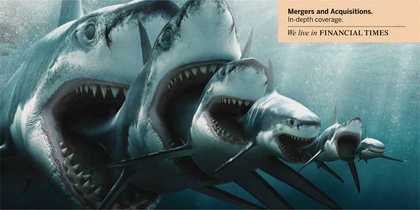In 1918 a heckler interrupted a church service with a shout that announced Dada in Berlin: ‘What is Jesus Christ to you? To you he’s rubbish!’ (The German word is Wurst, literally, ‘a sausage’.)1 ‘We had to recognise the death of God and make it known,’ reports Raoul Hausmann, the Dada ‘philosopher’, giving Nietzschean significance to Johannes Baader’s outburst.2 Via humour, parody, irony the Dadaists poked fun at Christianity, art, culture, genius, the sublime: those characteristics that were supposed to make European civilisation superior to that of non-European and ‘primitive’ societies, but which had not stopped the slaughter of over two million soldiers in just one year of the First World War.3
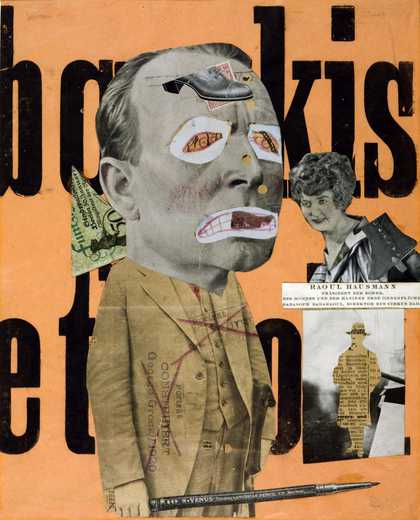
Raoul Hausmann
The Art Critic (1919–20)
Tate
As has often been recognised, the Dadaists not only parodied art and culture but also portrayed themselves in parodic terms. In Hausmann’s The Art Critic (1919–20), the mockery is multi-directional (fig.1). The art critic is portrayed with a strategically placed pencil (inscribed with the name VENUS) substituting for his penis, with money (a torn banknote) and fashion (the dandyish shoe) merging with his head, with its unseeing eyes and aggressive, yet also partially toothless, mouth. At the same time, Hausmann also undermines his own status as an artist by not only writing on the body of the art critic, ‘Constructed by George Grosz ’ – implicitly denying his own status as the producer – but also incorporating a self-parodic text next to the critic, ‘Raoul Hausmann president of the sun, the moon and the little earth (inner surface) Dadasoph Dadaraoul, director of the Dada circus.’
Circus and clowning were integral to Dada, and the influence of Nietzsche on the Dadaists is well known. However, the links between buffoonery, Nietzsche and the anti-sublime in Dada have remained underexplored.4
In this article I shall focus on the links between Nietzsche’s Ecce Homo (1888/1908) and a tradition of German buffoonery: that of the Hanswurst, suggesting that it is this element of buffoonery that appealed to the Dadaists, and that this tradition also needs to be understood in terms of the Schopenhauerian sublime.5
Hugo Ball is sometimes described as the ‘father’ of Dada. But Ball knew his Nietzsche well. Not only had Ball – a German national who left Berlin for neutral Switzerland in 1915 – written an unpublished doctoral dissertation on Nietzsche,6
he also refers to him extensively both in his Critique of the German Intelligentsia (1919)7
and also in his Flight out of Time: A Dada Diary.8
There he claims that Nietzsche ‘sang the praises of foolishness [Torheit]’ whereas Schopenhauer sang the praises of ‘cleverness [Gescheitheit]’.9
Since in his Critique he discusses both Schopenhauer and Nietzsche’s Ecce Homo in some detail, we might speculate that some of the background that I am sketching in here would have been familiar to Ball.10
If so, it might help explain Ball’s (temporary) adoption of the role of the fool; his joining of an itinerant vaudeville group; and the eventual foundation of Cabaret Voltaire in Zürich in 1916: the event that is generally picked out as the origins of Dada as a movement.
In Ecce Homo Nietzsche asserts: ‘I have a terrible fear that one day I will be pronounced holy: you will guess why I publish this book beforehand; it should prevent people from doing mischief with me. – I do not want to be a holy man, sooner rather a Hanswurst. – Perhaps I am a Hanswurst. –.’11
Hanswurst (sometimes also Hans Wurst) translates literally as ‘Hans the Sausage’: it is conventionally translated as either ‘buffoon’ or ‘clown’. Hanswurst was a crude, burlesque-style rascal in a tradition of German-language semi-improvised comedy in which obscenity was both celebrated and valued.
Originally a character in Austrian (especially Viennese) folk theatre, the Hanswurst became a stock character in much German popular theatre and comic opera. Appealing primarily to the lower classes, Hanswurst appeared in scripted and unscripted plays, but also in pantomimic interludes in plays put on by the strolling players as they travelled from town to town. A naïve and boastful simpleton whose main characteristics were greediness and lewdness, Hanswurst was always looking for money and other means to feed his gargantuan appetites. As the critic Aikin-Sneath puts it, ‘Either running away from old women, or running after young ones, [Hanswurst] is unfailingly sensual, lewd and philoprogenitive: the epitome of lusting humanity.’12
The subversive and vulgar tendencies of the Hanswurst tradition are clearly illustrated by a letter from the English traveller, Lady Mary Wortley Montague, who attended a version of Amphitryon in Vienna in 1716 which featured Josef Anton Stranitszky, nicknamed ‘the original Viennese Hans Wurst’. She confessed, ‘I never laughed so much in my whole life,’ even though ‘I could not easily pardon the liberty the poet had taken of larding his play with, not only indecent expressions, but such gross words as I don’t think our mob would suffer from a mountebank.’ As well as featuring a tailor, a banker and a Jewish moneylender, all pursuing Jupiter – who had been transformed into the character Amphitryon – for outstanding debts, there were also two servants who ‘very fairly let down their breeches in the direct view of the boxes, which were full of people of the first rank that seemed very well pleased with their entertainment, and assured me this was a celebrated piece’.13
Of a peasant class (sometimes wearing a pointed green hat, with a large red heart and the letters HW embroidered on his breast), Hanswurst was a licensed fool who spoke ironically and openly about contemporary affairs. Hoaxed and duped by the other stock characters, such as Harlequin and Pulcinella, Hanswurst’s clownish antics interrupted otherwise ‘serious’ and tragic dramas. As Aikin-Sneath puts it, ‘Tragic and comic scenes alternate, and frequently in the same scene the ludicrous and calamitous are juxtaposed. A murder or a suicide does not prevent Hans Wurst from playing his tricks … The comic element, though it borders on the gruesome, is kept free of any counteracting emotions, such as pity or fear.’14
Ecce Homo – the book in which Nietzsche expresses his Hanswurst ambitions – is a half humorous and half megalomaniac autobiography, with chapter titles such as ‘Why I am So Wise’, ‘Why I Write such Good Books’ and ‘Why I am So Clever’. From the start, Nietzsche’s tone alerts us to the fact that we should not take his words at face value – as we certainly should not, given the falsehoods and crazy exaggerations that the text includes. Written in 1888, Ecce Homo was not published until 1908: eight years after Nietzsche’s death, and nearly twenty years after Nietzsche’s catastrophic nervous breakdown in January 1889 which left him completely incapacitated. During the intervening years Nietzsche’s sister, Elisabeth Förster-Nietzsche, edited the text (and the rest of his œuvre) in such a way as to portray her brother as favourable to German nationalism – redacting those passages in which Nietzsche’s criticisms of Germany (and of her) were at their most extreme.15
Despite Elizabeth’s success in promoting a Nietzsche cult and aligning it with anti-Semitism, Ecce Homo is a clear influence on the exiles from German militarism who were linked to Dada in Zürich, and also on the Dadaist critics of German culture and nationalism in Berlin.
Ball comments extensively on Ecce Homo, and we know that Hausmann himself owned a copy, along with three other books by Nietzsche.16
A 1922 photomontage by his partner, Hannah Höch, includes a direct quotation from Nietzsche’s Ecce Homo among her ‘proverbs’. Placed next to a (partly obscured) photograph of herself in the photomontage Meine Haussprüche (My Household Proverbs) 1922, the passage translates as: ‘acoustic illusion that where nothing is heard, also nothing is there’.17
Art historian Michael White has argued that Johannes Baader’s exhibit at the first International Dada Fair in Berlin in 1920, Great Plasto-Dio-Dada-Drama, reworks the genre of fantastical autobiography in a way that is indebted to Nietzsche’s Ecce Homo.18
The structure of the five tiers and pinnacle of Baader’s elaborate installation – which was constructed out of a mélange of found objects and printed posters, newspapers and papers – was explicitly linked by Baader in the accompanying text to his fictional autobiography, The Fantastic Life Story of the Oberdada.
Even more obviously (although generally missed by art historians and commentators), George Grosz is drawing on Nietzsche when he gives the title Ecce Homo to a portfolio of eighty-four drawings and sixteen watercolours that he produced between 1915 and 1924. The ultimate derivation of Grosz’s title – which translates into English as ‘Behold the Man’ – is the Latin phrase used by Pontius Pilate (John 19:5) when he presents Christ, scourged and crowned with thorns to a hostile crowd shortly before his Crucifixion. But, more immediately, it refers back to Nietzsche’s autobiography in which he positions himself as a Hanswurst and a counter to the wounded Christ.
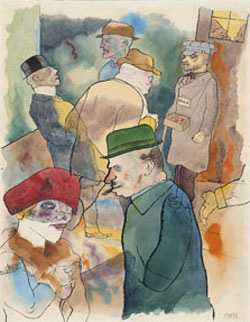
Fig 2. George Grosz
Twilight 1923
Dämmerung Plate XVI from Ecce Homo (Berlin: Der Malik-Verlag) 1923
Watercolour
Museo Thyssen-Bornemisza, Madrid
The final watercolour in Grosz’s original – initially banned, but later reissued – book based on Ecce Homo is entitled Dämmerung (Twilight): a title that itself recalls the title of another of Nietzsche’s late works, Götzen-Dämmerung (Twilight of the Idols) 1889 (fig.2). Nietzsche’s title is itself a satirical play on the title of Wagner’s opera, Götterdämmerung (Twilight of the Gods), and – like the late Nietzsche – Grosz was evidently opposed to the German nationalism of Wagner and the Wagnerians, as is evidenced by Drawing 16 of his Ecce Homo book. ‘In Memory of Richard Wagner’ depicts a paunchy, middle-aged, male who is attired in Teutonic costume from the waist up, with cow horns on his head and a spear in his left hand and a cigar in his right, but with bare buttocks. The cigar (marked with an imperial cross, symbolising German militarism) points suggestively towards a completely naked and overweight female, of Wagnerian type and stature, and an equally naked and sexually immature girl. Grosz’s contempt for Wagner, and the symbolism of Teutonic militarism as deployed by the Wagnerians, is hard to miss.
Grosz’s portfolio offered a vicious satire on German society, German militarism, and the hypocrisy (especially the sexually driven duplicity) that was acted out on the city streets of Berlin during those years. About those times, Grosz himself commented: ‘All moral codes were abandoned. A wave of vice, pornography and prostitution enveloped the whole country. Je m’ens fous was the motto, at last I’m going to have a good time.’19
Commenting on the inflation, the cabarets and the anti-Jewish and pro-Marxist violence, he remembers, ‘The whole city was dark, cold, and full of rumours. The streets became ravines of manslaughter and cocaine traffic, marked by steel rods and bloody, broken chair legs’.20
It is unclear whether Grosz was an objective ‘natural scientist’ simply recording these events, as he claims in his Autobiography, or whether – as he then goes on immediately to assert – he identified with all the characters that he lampooned.21
In any case, the Ecce Homo portfolio triggered an obscenity trial in 1923–4, and it is not hard to see why. Grosz explains how he simply ‘played along with’ the persona of the ‘talented loafer’, ‘circus clown’ and ‘sidewalk artist’, and he suggests that all these roles were integral to Dada, although he also remarks, ‘I was and still sometimes am something of all the above’.22
What this has to do with Nietzsche and the sublime, I shall now attempt to describe.
As well as proclaiming himself as a Hanswurst in Ecce Homo, Nietzsche describes Shakespeare’s Hamlet in similar terms: ‘I know no more heart-rending reading than Shakespeare: what must a man have suffered to have such a need of being a Hanswurst! – Is Hamlet understood? Not doubt, but certainty, is what makes one insane. – But to feel that way, one must be profound, an abyss, a philosopher. – We’re all afraid of the truth’.23
This extremely odd link between Shakespeare, Hamlet and being a Hanswurst needs to be understood in terms of the account of the sublime to be found in the philosopher who most influenced Nietzsche as a young man: Arthur Schopenhauer.
Schopenhauer had argued that tragedy – above all the other types of poetic art – can best generate the experience of the ‘sublime’, and take man ‘beyond’ the illusions of the phenomenal world.24
Space and time, objects and subjects – especially the individual self – are all rendered insignificant. According to Schopenhauer, there is no qualitative difference between the beautiful and the sublime; but the experience of the sublime involves a more abrupt breakdown of the illusions of the phenomenal world than is the case in respect of the enjoyment of the beautiful.25
The experience of the sublime allows us to penetrate the ‘veil of Maya’, and grasp that all individuality is an illusion. He glosses the truth hidden behind the veil as follows: ‘“I am all this creation collectively, and beside me there exists no other.” It is an elevation [Erhebung] beyond our own individuality, a feeling of the sublime [Erhabenen].’26
Schopenhauer has substituted the Hindu trope of ‘Veil of Maya’ from the Upanishads for the apparently Egyptian – but, in fact, Greco-Roman – trope of the ‘veil of Isis’ which Kant, Schiller, Reinhold, Novalis and Mozart had all associated with the sublime.27
As Kant himself put it: ‘Perhaps nothing more sublime has ever been said, or thought ever been expressed more sublimely, than in the inscription above the Temple of Isis (Mother Nature): “I am all that is and that was and that shall be, and no mortal has lifted my veil.”’28
Schopenhauer – like Schiller, Novalis and Reinhold (but unlike Kant) – believed that it was possible to gain contact with this suprasensible ‘truth’ via the experience of the sublime.
Schopenhauer suggested that tragedy induces a kind ascetic saintliness: ‘the summons to turn away the will from life remains the true tendency of tragedy’.29
Schopenhauer also insisted that modern tragedy – especially Shakespearean tragedy – is far superior to that of the Greeks.30
This is, he says, because it is the function of tragedy to produce compassion or pity [ Mitleid], and to act as a ‘quieter’ of the individual’s own will.31
The best tragedy will produce ‘resignation, the giving up not merely of life, but of the whole will-to-live itself’.32
For Schopenhauer, this will-negating response to tragedy occurs when one’s own individualised will is made to seem pointless and, as such, is disabled, leading the spectator (or tragic hero) to turn his or her back on life.
Schopenhauer illustrates this ascetic resignation through the example of Hamlet’s ‘to be or not to be’ monologue. His claim is that Hamlet illustrates that life ‘is so wretched that complete non-existence would be decidedly preferable to it’. It shows that, faced with the choice of living or not living, no ‘sincere’ man who is still ‘in possession of his faculties’ could, at the end of his life, ‘ever wish to go through it again. Rather than this, he will much prefer to choose complete non-existence.’33
For Schopenhauer, the superiority of Hamlet over any Greek hero is proved precisely by the fact that Hamlet’s failure to act – or even will his own suicide – displays a pessimism which is at odds with Greek ‘optimism’, and the latter is dismissed as ‘not merely an absurd, but also a really wicked way of thinking’.34
For Schopenhauer, Shakespeare is supremely sublime because he sees into the ‘horror’ of existence, and leads the audience towards despair.
Schopenhauer also makes some further comments about Hamlet in his discussion of the nature of the ridiculous (the lächerlich). In chapter 8 of volume II of The World as Will and Representation (translated by Payne as ‘On the Theory of the Ludicrous’), Schopenhauer claims that which is truly humorous is not in conflict with the sublime, but can be found alongside it. True humour derives, according to Schopenhauer, from ‘the sudden apprehension of an incongruity between … a concept and the real object thought through it’.35
The incongruity can be registered in a number of differing ways, and Schopenhauer catalogues some of these. He then adds that because ‘the opposite of laughter and joking is seriousness’, and because incongruity is integral to that which is laughable, ‘the transition from profound seriousness to laughter is particularly easy’, and ‘the more capable of complete seriousness a person is, the more heartily can he laugh’.36
Schopenhauer then goes on to make a sharp distinction between ‘humour’ (Humor) and that which is merely ‘comic’ (komisch) or the output of a Hanswurst (translated by Payne into English as ‘clown’).37
Schopenhauer notes that ‘the word humour [Humor] is borrowed from the English’, and claims that it is a ‘quite peculiar species of the ridiculous which is … even akin to the sublime’. Schopenhauer’s chapter ends with the lament that the term ‘humorist’ is nowadays used to dignify the output of the ‘Hanswurst’.38
It is the nobler, English, style of humour – not that of the Hanswurst – which is explicitly described as the ‘child of the ridiculous and the sublime’.39
Schopenhauer gives various examples of the profound and ‘sublime’ type of humour, including Shakespeare. A couple of instances of humour in Hamlet are quoted, both given in German translation. The first is Hamlet’s answer to Polonius in Act II, scene ii, where Hamlet jokingly remarks that there is nothing that he would more willingly part with than the company of Polonius – ‘except my life, except my life, except my life’.40 Schopenhauer’s second example involves Hamlet speaking to Ophelia (III, ii, 133– 9) just before the performance put on by the players:
Hamlet: What should a man do but be merry? For look you how cheerfully my mother looks, and my father died within’s two hours.
Ophelia: Nay, ‘tis twice two months, my Lord.
Hamlet: So long? Nay, then, let the devil wear black, for I’ll have a suit of sables.41
Importantly, for Schopenhauer, Hamlet’s ‘humour’ does not conflict with the utterly sublime ‘moral’ that he elsewhere claims to find in Shakespeare’s play. Indeed, the first ‘joke’ shows Hamlet repeatedly willing his own death – but without actually committing suicide – in a way that neatly illustrates Schopenhauer’s belief that Hamlet makes us register that no man can will to live his life more than once. Schopenhauer’s second example also seems to show that deep seriousness (death and murder) can be appropriately expressed through merriment, playfulness and an outward display of cheerfulness. For Schopenhauer, however, a Hanswurst is incapable of real humour and is, by implication, also estranged from the sublime.
Schopenhauer’s contrast between the ‘German’ and ‘English’ comic traditions gains resonance from earlier Enlightenment attempts to ban the Hanswurst – and all improvisation, slapstick and gross humour – from the German stage, and to replace this low ‘German’ and Austrian kind of humour with translations from more ‘refined’ English, French and Italian tragedies and dramas, and with no deviation from the written scripts. The banishment of Hanswurst was symbolically staged in 1737 by Caroline Neuber who wrote a special prologue, entitled ‘The Victory of Reason or the Death of Hanswurst’, for her acting troupe, to back up the theories of Johann Christoph Gottsched who was concerned to eject the ‘disorderly’ figures of Hanswurst and Harlequin from the stages of German-speaking theatres.42
Hanswurst was solemnly burnt in effigy; but Gottsched himself was himself a Francophile, and initiated a debate that resonated through the eighteenth century as to whether Racine or Shakespeare should provide a more adequate model for the German stage.43
In Vienna, meanwhile, the Hanswurst found defenders in the so called Hanswurststreit (Hanswurst controversy) which lasted between 1747–69; and even in the North the ban on extemporised performances involving Hanswurst-type figures was never fully implemented.
Schopenhauer’s contrast between the ‘German’ comic tradition – allied to the Hanswurst – and to a more elevated and profound ‘English’ kind of humour clearly incorporates some elements of the reforming zeal that was initiated by Gottsched’s and Neuber’s attempts to create a new and ‘moral’ theatre for German-speaking peoples. However, since Schopenhauer’s chapter on the ‘ludicrous’ also itself cites the attempt to ban improvisatory drama as giving rise to an example of the ludicrous – when a horse ‘dunged’ on the Berlin stage, despite the ban on improvisation – it is clear that he is not straightforwardly writing in opposition to the Hanswurst.44
It is just that he is insisting that the Hanswurst – the merely ‘comic’ – cannot also be sublime.
It is hard to disentangle the views of the young Nietzsche from those of Schopenhauer, his philosophical ‘master’, although Schopenhauer’s moralistic view of art is clearly quite different from his own. Thus, in his first published work, The Birth of Tragedy (1872), Nietzsche both quotes with approval Schopenhauer on the sublime, and yet also seems to completely negate Schopenhauer’s analysis. Thus, in The Birth of Tragedy he indicates that the (‘Dionysian’) man who has been taken outside the framework of spatio-temporal individuation by the spirit of tragedy ‘resembles Hamlet’: ‘both have once truly looked into the essence of things, they have gained knowledge, and nausea inhibits action’.45 Like the Dionysian man, Hamlet has ‘true knowledge’, and registers ‘only the horror or absurdity of existence’. Furthermore, ‘an insight into the horrible truth outweighs any motive for action’. Like Schopenhauer, the young Nietzsche draws a moral from Hamlet: that unless we remain wrapped in ‘illusion’, action will seem pointless and that all motivation will simply be ‘killed’ within us.46
Up to this point, the analysis that the young Nietzsche provides of Hamlet sounds like that of Schopenhauer; but whereas the latter claimed that there is no remedy for insight into true being, in The Birth of Tragedy Nietzsche insists that,
Here, when the danger to his will is greatest, art approaches as a saving sorceress, expert at healing. She alone knows how to turn these nauseous thoughts about the horror or absurdity of existence into notions with which one can live: these are the sublime [das Erhabene] as the artistic taming [Bändigung] of the horrible, and the comic [das Komische] as the artistic discharge [Entladung]of the nausea of absurdity.47
The feelings of horror and of nausea engendered by Dionysian knowledge are ‘discharged’ through comedy and ‘healed’ by sublime tragedy. Thus, the underlying message of The Birth of Tragedy is optimistic. This is also borne out by an even more striking difference between the two philosophers’ accounts of the tragic: namely, that Nietzsche portrays Greek tragedy as greatly superior to that of the moderns. Indeed, Nietzsche values precisely that Greek cheerfulness that Schopenhauer had dismissed as both senseless and ‘wicked’. Hamlet is given Schopenhauerian significance by Nietzsche, but the Schopenhauerian framework of values is also implicitly undercut.
In his late writings Nietzsche moved further and further away from Schopenhauer, and he criticises ‘those who are sublime’ for their inability to laugh. Thus, in Thus Spoke Zarathustra (1883–5), Zarathustra complains that the man who is sublime is disfigured by disgust: ‘Contempt is still in his eyes and nausea hides round his mouth’.48
Earlier, as a young man, Nietzsche had modified Schopenhauer as he found a way to think the sublime as ‘taming’ – or, more literally, ‘binding’ – the ‘horror’ of existence, and opening up the possibility of willing to live one’s life over again. But now Nietzsche finds a different response to Schopenhauer, as Zarathustra discovers a different way of rationally willing the recurrence of one’s life – however terrible and tragic that life might be. He insists that the greatest human being (the ‘overman’) is able to say ‘yes’ to life, and will that the world should repeat itself in all details an infinite number of times again – however awful that thought (and the suffering) might be.49
This is the climax of the third book of Thus Spoke Zarathustra (Part 3); and in the final book (Part 4) Nietzsche affirms a kind of ecstatic buffoonery as Zarathustra embraces this most terrible thought.
In his so-called ‘late’ period, Nietzsche denies that there is any underlying or sublime ‘truth’ that is covered over – and healed – by art. Instead, we are left with a play of surfaces, and with the affirmation of life as the new ideal. Indeed, in Ecce Homo Nietzsche takes an additional step as he aligns himself with the Hanswurst: with a mode of the ridiculous, the crude and the all-too-human – with that which is, above all, not elevated, self-denying or sublime in the Schopenhauerian sense. Thus, in the section of Ecce Homo in which Nietzsche links Shakespeare’s Hamlet to the Hanswurst, he goes on to claim that it was Francis Bacon, not Shakespeare, who wrote this play. And Nietzsche not only praises Bacon for being ‘the first realist in every great sense of that word’, he also praises the ‘strength’ that Bacon possessed ‘for action, for monstrous action, for crime’.50
In adopting the persona of a Hanswurst in Ecce Homo, Nietzsche is aligning himself not only with a mode of the ridiculous that is cut off from the sublime, but also with that which is morally repellent – with ‘monstrous action and crime’.
This is also borne out by other references to the Hanswurst in Nietzsche’s Notebooks and late texts. In Nietzsche’s early works Hanswurst seems to be used primarily as a term of abuse and a synonym for a simpleton or fool. By 1886–7, however, we find more positive uses of the Hanswurst terminology. Thus, in his unpublished Notebook of 1887 Nietzsche explicitly describes the Abbé Galiani as ‘that most deep and reflective Hanswurst’,51
and in Beyond Good and Evil Nietzsche provides a positive description of Galiani which fits with the stereotype image of the Hanswurst. Ferdinando Galiani (1728–87) was, Nietzsche says, ‘the profoundest, most clear-sighted, and perhaps also filthiest man of his century’ in whom ‘genius’ is tied to ‘an indiscreet billygoat and ape’.52
As far as the references to Galiani are concerned, I do not think Nietzsche was thinking primarily of Galiani’s (undoubtedly) lecherous character (as Kaufmann’s notes to Beyond Good and Evil seem to suggest),53
but to the fact that, like the Hanswurst, Galiani was above all concerned with the mechanisms of desire, money and of greed. He wrote wittily about value, and how it fluctuates in relation to appetites, need and scarcity. Nietzsche makes several references to his ‘friend’ Galiani in his late Notebooks. As in the equation of Shakespeare with Bacon in Ecce Homo, Nietzsche’s positive comments on Galiani as a Hanswurst suggest the need to search for truths not at the level of what is ‘deep’ or ‘objective’, but through a new kind of realism in which attention is paid to surfaces, to human motivation and lusts.
In the Preface to the 2nd edition of The Gay Science (1887) Nietzsche, famously, substitutes the trope of Baubo, and truth as ‘naked’, for the notion of a truth that is hidden behind the ‘veil of Isis’ or of ‘Maya’:
Perhaps truth is a woman who has reasons for not letting us see her reasons? Perhaps her name is – to speak Greek – Baubo?
Oh those Greeks! They knew how to live. What is required for that is to stop courageously at the surface, the fold, the skin, to adore appearance, to believe in forms, tones, words, in the whole Olympus of appearance. Those Greeks were superficial – out of profundity.54
Baubo was an old crone who acted as comforter to Demeter after Persephone (Kore) had been snatched into the underworld. In the all-female mystery rites of Eleusis in which Demeter’s ‘running for help’ was annually re-enacted, Baubo acted as a kind of clown. Not only did she personify the obscene songs that the women sang, but she seems to have provoked laughter by lifting her skirts and showing her naked sexual organs beneath, in a way that mimicked the action she performed to amuse Demeter. In his invocation of Baubo, Nietzsche deploys laughter as a counter to the sublime, and the need to stop at the ‘fold’ of the surface as a block to depth and to a metaphysics that locates truth ‘beyond’ appearances.55
It seems that in his late writings Nietzsche came to regard Galiani and all other Hanswürste as also superficial ‘out of profundity’. Truth is not veiled but naked; fleshiness and human baseness are affirmed as Nietzsche seeks to strip away any sense of pity or compassion, and block all conventional notions of the tragic. This is a dangerous endeavour, as Nietzsche also registers. Announcing the move from ‘Incipit tragoedia’ (‘Let the tragedy begin’) to ‘incipit parodia’ (‘Let the parody begin’) in this 1887 Preface to The Gay Science, Nietzsche’s voice also proclaims the arrival of ‘Something downright wicked and malicious’.56
It is the Hanswurst – and of Nietzsche himself as a ‘downright wicked and malicious’ Hanswurst – who enters and seeks to put an end to the ‘tragedy’ of life with these ominous and mocking words.
Interestingly, in an unpublished draft of the second Preface to The Gay Science, Nietzsche actually uses the term Hanswürste as he describes the ‘tragic’ and foolish young men who pursue the Egyptian goddess, Isis, in their mad and overly enthusiastic attempts to ‘unveil’ the truth.57
However, in the published version, the derogatory reference to the Hanswurst is missing. Countering any suggestion that the joy in surfaces and the pleasure in appearances masks a deep and hidden ‘truth’, Nietzsche now writes as a ‘convalescent’ who has recovered from the illness that marks all ‘aspirations after the sublime [Erhabenen], lofty [Gehobenen] and weird [Verschrobenen]! No, if we convalescents still need art, it is another kind of art – a mocking, light, fleeting, divinely untroubled, divinely artificial art that, like a pure flame, licks into unclouded skies’.58
We can now see the links between the sublime and the Nietzschean-inspired buffoonery of the Dadaists in Berlin. Their response to the chaos and tragedy that confronted them in war-ravaged and inflation-blighted Germany seems to echo Nietzsche’s announcement: ‘Let the parody begin’. Indeed, Nietzsche’s description of his ‘filthy’, yet ‘clear-sighted’, Hanswurst ‘friend’, Galiani, might also serve as a depiction of George Grosz – or at least of the way Grosz portrays himself in the Ecce Homo portfolio. Like the mythic clown Baubo, Grosz seems to delight in showing female nakedness, and laughing at the notion that there is a sublime ‘truth’ concealed behind the veil. Instead, skin, flesh and nakedness are celebrated in a laughter that seems designed to counter the sublime. Grosz seems to have taken the admonition to become ‘superficial out of profundity’ as his own ideal.
But there is one important difference – and it is a difference that might be taken to apply, more generally, to Berlin Dada. We do not find in Grosz the affirmative attitude to life that Nietzsche’s late works promote. Grosz clearly does not will (with Nietzsche) that all suffering (however terrible) should recur over and over again. The German title of Grosz’s own autobiography – ‘A Little Yes and a Big No’ – clearly indicates as much. Grosz’s title is an implicit refusal of the ecstatic ‘yes-saying’ scenes in Thus Spoke Zarathustra, where Zarathustra himself joins the ass in braying ‘I-A’, ‘I-A, ‘I-A’ (‘Yea-Yuh’, ‘Yea-Yuh’, ‘Yea-Yuh’) as he affirms the infinite repetition of life in all its detail and all its repetitive tragedy, torment and pain.59
Away from the chaos and suffering of Berlin, Hugo Ball would adopt a different solution. His Critique of the German Intelligentsia (1919) ends with Ball signaling his retreat from Dada into a kind of radical Catholic mysticism, as he explores his unease with the late Nietzsche’s alignment with ‘Satanists’, such as Napoleon, Machiavelli and the French Enlightenment philosophers.60
There are extensive references to Nietzsche’s Ecce Homo at the end of the text, as well as to Schopenhauer.61
The question of Ball’s relation to Nietzsche in his Dada phase is complex, since it has been argued that Ball edited his ‘Dada Diary’ before it was published in 1927, in order to align it more with his growing distance from Nietzsche.62
However, since Ball’s contrasting attitudes to the early (proto-Schopenhauerian) Nietzsche and the ‘Satanic’ elements in late Nietzsche is already evident by 1919, it would seem that Ball’s unease with Nietzsche’s philosophy sets in earlier than some have supposed.63

Fig 3. Hugo Ball reciting Karawane in a cubist costume at the Cabaret Voltaire, Zürich 1916
Gelatin silver on paper
Courtesy Fondation Arp
With the contrast between Schopenhauerian (‘saintly’) humour and Nietzschean (profane) laughter in mind, it seems clear that Ball always was closer to the ‘sublime’ type of humour which Schopenhauer linked to asceticism, than he was to Nietzsche’s late prankishness. Thus, in a famous description in his ‘Dada Diary’ of his recitation of a ‘poem without words’, which he performed dressed in a shiny blue cylinder outfit in 1916 (fig.3), Ball records:
Everyone was curious. So, because I could not walk as a cylinder, I was carried onto the stage in the dark and began slowly and solemnly:
zimbrabim
glandridi lauli lonni cadori
gadjama bim beri glassala
…I noticed that my voice had no other choice but to take on the ancient cadence of priestly lamentation, that style of liturgical singing, like that which wails in all the Catholic churches of East and West … Then the electric light went out, as I had ordered and, drenched in sweat, I was carried down off the stage as a magical bishop.’64
There are superficial similarities between the absurdity of the costume that Ball adopted as he recited this ‘sound poem’ and that of the Hanswurst – even if the shiny blue surface substituted for the more traditional reds and greens of the Hanswurst attire. However, it would seem that, even during the foundational performances that announced Dada in Zürich, the underlying mood of Ball’s antics is closer to Schopenhauer – in which the self is completely surrendered, and all individuality falls away – than to the Hanswurst tradition that seems so closely aligned to the ‘dandyism’ of Dada in Berlin. Ball’s Dada Diaries of 1916 show him depicting himself as a kind of Schopenhauerian ‘magical bishop’ who surrenders all agency, consigning his body into the hands of others as he becomes simply a mouthpiece for a kind of universal lamentation.
Ball’s costume might have made him look like a fool; but there is something profoundly serious – and also Schopenhauerian – underlying his performances. This impression is heightened as we notice that in a much earlier entry in his Dada Diary – written in 1914, only three months after Germany’s invasion of Belgium (which Ball witnessed, with horror, as a volunteer) – Ball could be found advocating a kind of Schopenhauerian asceticism, claiming that there is nothing ‘interesting’ about the ‘demonic’, given that now ‘all the world has become demonic. The demonic no longer differentiates the dandy from the everyday. One now has to become a saint, if one wants to differentiate oneself still further’.65
By contrast, the laughter and parody which emerged from the Dadaists who remained in Berlin during the war years seems far more Nietzschean. But if we listen more intently, we find ourselves detecting a kind of hybrid between Nietzschean buffoonery and the Schopenhauerian ridiculous. Grosz, in particular, aligns himself with the monstrous and the criminal, even as he subjects it to excoriating critique. Outwardly, he assumes the mask of the Nietzschean Hanswurst; but elements of Schopenhauerian pessimism and of the sublime still persist. If not exactly ascetic in the Schopenhauerian sense, the overwhelming mood of the laughter is nihilistic – closer to Schopenhauer’s humour that is both ‘ridiculous’ and ‘sublime’ than to the ‘Yes-saying’ and ecstatic buffoonery of Nietzsche’s late texts.

